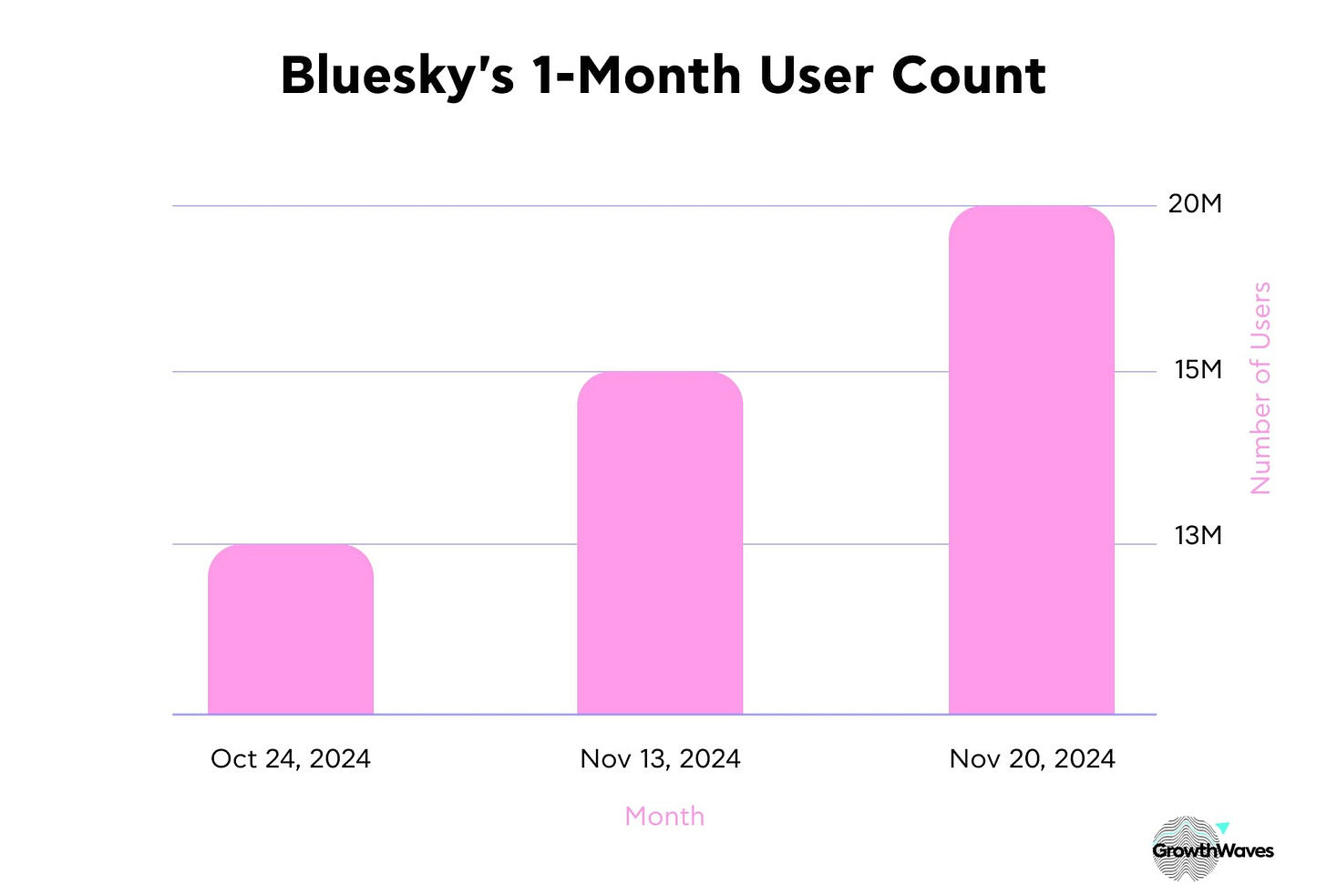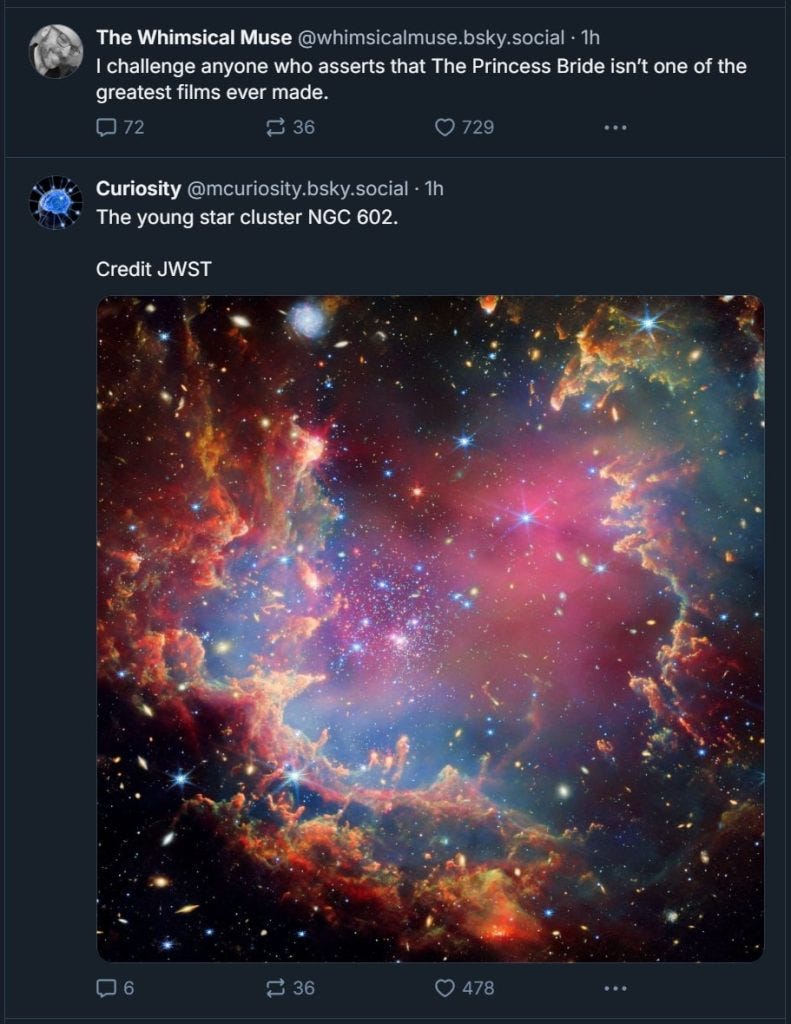Is this new social platform worth your attention?
The rise of Bluesky—opportunity or hype?
👋 Hey, I’m George Chasiotis. Welcome to GrowthWaves, your weekly dose of B2B growth insights—featuring powerful case studies, emerging trends, and unconventional strategies you won’t find anywhere else.
There’s a (relatively) new social media platform on everyone’s radar – Twitter’s younger sibling, Bluesky.
Here’s why it might be a good new marketing channel for your business.
The rise of Bluesky
In 2019, Bluesky came into existence under Twitter’s roof. It became independent in 2021, experiencing a significant uptick in new users when it was announced that Elon Musk would acquire Twitter in 2022.
Most recently, just after the US elections in 2024, Bluesky saw an unprecedented rise in new users, reaching a total of 20 million users in November 2024.
In this time period, the app grew its user base at the rate of nearly 1M users per day!
But this is not a story of how you can copy Bluesky’s growth model. This is a story of how you could leverage Bluesky for the growth of your own business.
Benefits of early adoption
We’ve seen it time and again: new social media hot spots embracing new users like old friends and providing them with the boost they need to establish a presence on the platform.
These boosts and benefits can include (but are not limited to):
Generous organic reach.
Increased engagement opportunities.
Less competition compared to established platforms.
Higher chances of being featured or highlighted by the platform.
Potential for collaboration with popular individuals and brands joining early.
We’ve seen it on Instagram, TikTok, LinkedIn, you name it.
Eventually, these benefits taper off as algorithms change, and what you’re left with is the dredge most long-standing social networks find themselves in today.
But those early days can be a game changer for your brand.
And Bluesky is definitely still in its early days, as the company recently had to acquire additional servers to support the sudden surge in new users.
Should you get on the Bluesky train?
Here are two key things we know about Bluesky that could be useful for a brand:
UX-wise, Bluesky is almost identical to the OG Twitter. The same type of content that worked for Twitter audiences will work here, too.
User demographics:
Predominantly male.
Predominantly ages 25-34 with ages 18-24 following close behind.
Predominantly Brazil-based users, though the US is a close second place. Countries such as Singapore, Japan, and China are also well-represented.
To make your decision-making process easier, here are five questions you should ask yourself (and/or your team) to figure out whether Bluesky could be a new social media channel for your business:
Is your target audience active on Bluesky?
Are your competitors on Bluesky?
Do you have the resources to manage another social media channel?
How will Bluesky fit into your overall social media strategy?
What are the potential risks of joining Bluesky?
Pro Tip: While repurposing content is efficient in many ways, please don’t create another company profile to just regurgitate identical content from other channels. Play around with formatting, language, and the media you include to find a unique voice for that specific channel.
Thank you so much for reading December’s first GrowthWaves Note.
See you next week!



